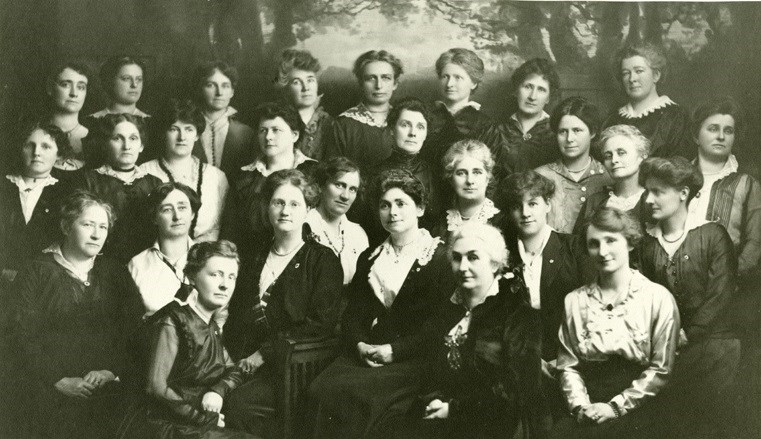From the archives of the Sault Ste. Marie Public Library:
*************************
Remember This? The Sault Ste. Marie Red Cross Society
In times of war or catastrophe, one of the first organizations to respond is the Red Cross. The symbol of a red cross on a white background was adopted in 1863 as a single distinctive symbol backed by the law indicating respect for army medical services, volunteers with first aid societies and the victims of armed conflicts. This symbol became instantly recognizable around the world.
On May 19, 1909, the Canadian Red Cross Society Act was approved by Parliament in Ottawa and decreed that the Canadian Red Cross would serve as an auxiliary to the Government of Canada for Canadians. This was a measure that was in accordance with the Geneva Conventions. The passing of this act made the Canadian Red Cross an independent charity organization and no longer a branch of the British Red Cross.
According to the Red Cross Society Act their purpose is to:
“Furnish volunteer aid to the sick and wounded of armies in times of war . . . in time of peace or war to carry on and assist in work for the improvement of health, the prevention of disease and the mitigation of suffering throughout the world.”
It is therefore no surprise that a local chapter of the Red Cross Society was formed to address some of these same issues within the community. In the attached photo, taken during the First World War, the society consisted of (back to front, left to right): Mrs. Hayward, Mrs. C.B. Smith, Mrs. Bassingthwaighte, Mrs. Johnson, Miss L.B. Ross, Miss Tillie McColl, Mrs. J.F. Shannon, Mrs. F. Stone; Mrs. W. Simms, Mrs. R.H. Knight, Miss O'Conner, Miss R.J. Gibson, Miss A. Sutherland, Mrs. F.N. Lloyd, Mrs. J. O'Boyle, Mrs. P.T. Rowland, Mrs., Reid, Mrs. Yeoman, Mrs. C. Farewell, Mrs. MacColl, Miss Way, Mrs. Geo. Farewell, Mrs. J. Frater-Taylor, Mrs. C. Findlay, Mrs. L.A. Green, Mrs. J.E. Irving, and Mrs. J. Foulis.
After the end of the First World War, the need for the services of the Red Cross declined and the local branch had lapsed. In 1932, the effects of the Depression were being felt in the community and at a meeting of the Rotary Club on October 18, 1932, the city was encouraged by Field Secretary N.R. Vinton of the Ontario Division of the Canadian Red Cross Association to re-organize their branch of the Canadian Red Cross Association. He explained that they would then be able to centralize their efforts to meet the need for collecting clothing, setting up homeless shelters and food banks, providing dental and health care for children as well as organizing classes for homemakers in order to provide instruction on food preparation. Just three weeks later, the local branch had a new slate of officers in place under the leadership of president, Dr. N.F. W. Graham and they were able to start working with the Welfare Board in order to help those in need of assistance within the community.
In 1939, with the onset of the Second World War, the local branch began to intensify their efforts in fundraising for the war relief effort. Chairman of the men’s committee, J.P. Reed, explained in a newspaper article that they had set a goal of raising $10,000 but when they came up short, many of the other local organizations pitched in and contributed to their campaign. Reed shared that the citizens of Sault Ste. Marie embraced the campaign including an 83-year-old man who made a donation of one dollar. He said, “It is all that I can give, but I want to have a share in it.”
According to a 1976 Sault Star Article quoting then local Red Cross Executive Director Charles Cooper, “the Red Cross affects everyone from the cradle to the grave. At birth the Red Cross has a unit of blood on hand for your mother and with our involvement with services for seniors we’re with you at the end.”
Charles Cooper served as executive director of the Red Cross for 27 years. In a 1988 Sault Star article, Cooper said, “We (the Red Cross) lend out things you don’t think about until you need them”.
The Sault Ste. Marie Red Cross unit began providing homemaker services in 1962 in order to supply someone to help with household duties during the illness or absence of the mother. Over the years they gave aid to families or individuals who were the victims of minor disasters and in cases of fire or flood, food, shelter, clothing, bedding and other miscellaneous items were provided.
Today, the Canadian Red Cross continues with emergency and disaster relief as well as educating the public in First Aid and CPR, swimming and water safety. Other programs provided by the Canadian Red Cross include Global Health, Violence, Bullying and Abuse Prevention, and Migrant and Refugee Services.
*************************
Each week, the Sault Ste. Marie Public Library and its Archives provides SooToday readers with a glimpse of the city’s past.
Find out more of what the Public Library has to offer at www.ssmpl.ca and look for more Remember This? columns here
